Dentures crafted by SOD students something to smile about
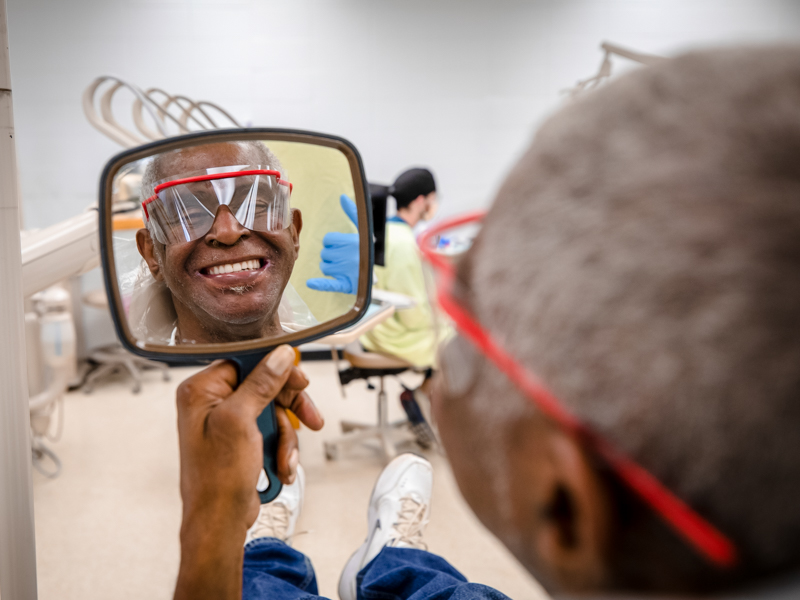
When one of his wisdom teeth got a mind of its own and started moving sideways, Wilbert McGee found himself in excruciating pain.
“I had to crawl on my knees to get to the dentist. My wisdom tooth went back into my jawbone,” said McGee, who does sheet rock finishing for a living. “It was like someone had hit me in the head with a sledgehammer.”
That was 1979. Not only did he have the wisdom tooth removed, but “they had to take all of my teeth,” McGee said.
The Jackson resident never managed to get false teeth, more accurately called dentures. “I didn’t have any problems eating, because I knew what would hurt and what wouldn’t,” McGee said.
Soon, though, he’ll be able to enjoy hard candy, peanuts and other foods that dig into his gums and potentially injure them. Through a program in the School of Dentistry at the University of Mississippi Medical Center, McGee is getting a set of dentures, created by fourth-year dental student Trent Johnson, at no cost.
Military veterans and others in need who have no remaining teeth are eligible for the initiative, which traditionally has been part of UMMC’s spring Dental Mission Week. McGee is among 20 patients who were paired with a student who has full responsibility for creating and fitting their new dentures.
McGee said he never intended to wait so long to get dentures, but the price was right through the School of Dentistry.
“I want to be myself,” he said. “They have treated me so nice here.”
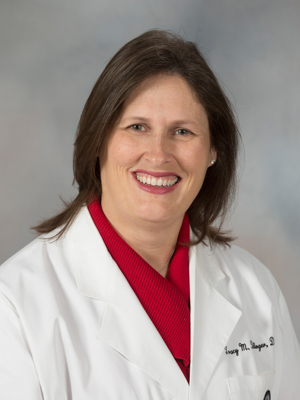
Much goes into the thinking and expertise behind crafting dentures that can be life-changing for a patient, said Dr. Tracy Dellinger, professor and chair of Care Planning and Restorative Sciences.
“In Mississippi, we have a high rate of obesity and type 2 diabetes. If you have no teeth, it’s challenging to eat raw vegetables and some proteins,” she said. “There’s no way to eat those foods without swallowing risk.”
Instead, those without teeth often eat breads or other foods high in refined sugars because they’re easier to chew, although often unhealthy. “Dentures give them additional opportunities for chewing,” Dellinger said. “And being able to have a new smile that is whole and intact can really help someone’s self-esteem.”
Making dentures is just one leg of the SOD educational journey. “Unlike many health care student programs, our students are performing invasive procedures prior to becoming residents or practicing in the private sector,” Dellinger said. “They are completing fillings, crowns, implants, and certain types of surgical procedures, and they are treating a wide range of patient demographics.”
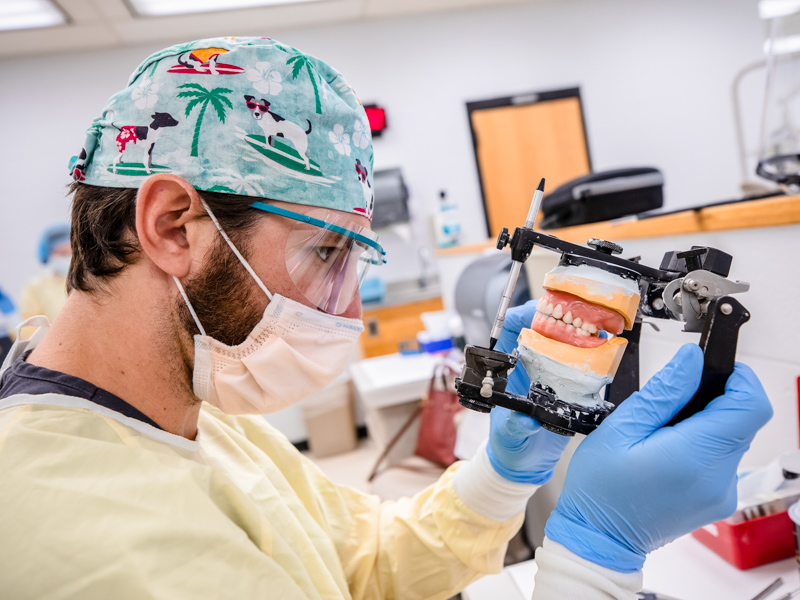
Students begin learning about creating dentures during their second year of schooling, Johnson said. In their third year, he said, “we have clinical requirements to make a certain number of partial and full dentures.”
By the time a student reaches their fourth year, they must show full competency in creating dentures. “That means I’m doing everything without faculty help,” Johnson said.
Here’s how Johnson and fellow students produce dentures: First, they make a mold of the patient’s mouth using powdered gypsum stone. They place wax over the mold to make front-teeth and back-teeth mock-ups of the future dentures. Students can manipulate the mock-ups to make sure that the future teeth are in the right position for chewing and that they are aesthetically pleasing.
“We use wax because it can be heated and molded into different shapes,” Johnson said. “We re-establish occlusion where the patient bites down. We figure out how tall it needs to be, and how far back it needs to go.”
After the student, patient and a faculty member overseeing the process are satisfied with the results, the student replaces the wax with permanent acrylic. Patients have separate fittings for the front- and back-teeth mock-ups and then the acrylic dentures before they go home with the final product – and even then, are seen a couple more times to make sure the fit is perfect and that they’re happy with their new look.
“We give it the texture of the gums,” Johnson said of each set of dentures. “We want it to look normal and natural, rather than like teeth and plastic.”
“Our students are doing 99 percent of the clinical work,” Dellinger said. “They are seeing the patients, doing the lab work and doing all of the adjustments.”
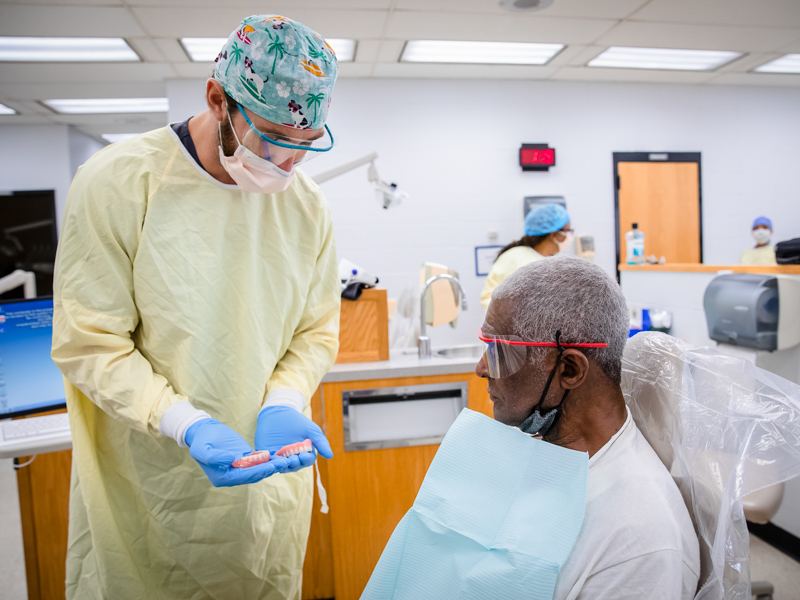
Johnson will receive a grade from Dellinger that reflects how well he mastered the competency of producing and fitting dentures. He treated McGee with no faculty help, but “if she saw a critical flaw, she would step in,” Johnson said of Dellinger.
McGee was understandably happy as he waited to be called back for his March 22 appointment to try on his mock-up dentures for the first time. He was ushered into the school’s spacious dental clinic, where dental students and dental hygiene students give care to patients from all walks of life.
“So, how are things going?” Johnson asked McGee. He questioned McGee about his overall health, consulting his medical chart and making sure he was feeling well that day.
“What’s your blood glucose? Let’s get your blood pressure real quick, and then we’ll try on these dentures,” Johnson told him.
As he slipped the dentures into McGee’s mouth, Johnson explained that the fit would be tighter several weeks down the line, after final tweaks are done in the laboratory. “We just want them all in the right spot,” he said of lining up the top and bottom teeth so that McGee’s bite will be where it needs to be.
“It’ll be good to get those teeth!” McGee told him.
“Smile for me?” Johnson instructed. “Bite down very slowly … good.
“I need to raise up those bottom teeth a little bit, but everything else is good,” Johnson said.
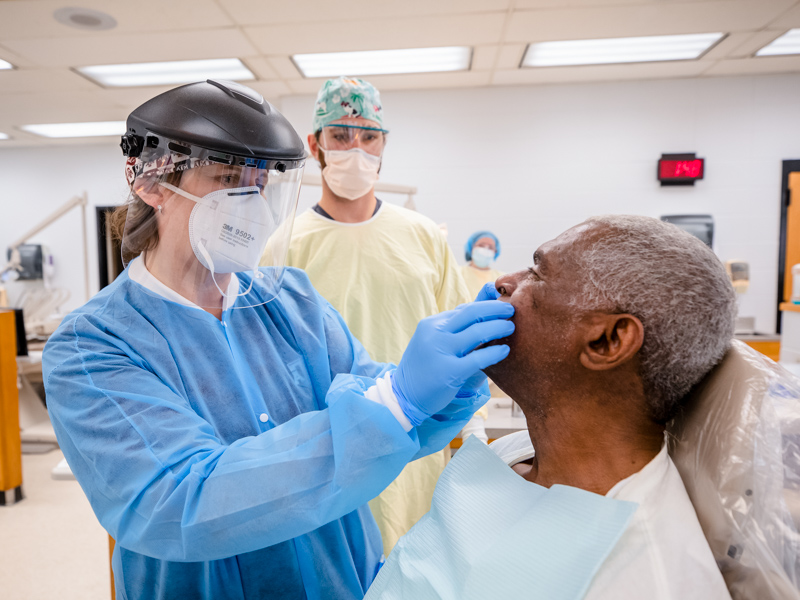
Dellinger stopped by for just a minute or two as Johnson completed his workup. “Sir, I’m going to gently stretch down your lip,” she told McGee.
Dellinger pointed out to Johnson that two front teeth were very slightly to the left of their optimal location. “We can change that, or we can leave it,” Johnson told McGee.
“Leave it,” Mc Gee said.
“If he’s happy with this midline, I’m happy with the midline,” Dellinger said.
When McGee revealed he hadn’t had teeth for more than 40 years, Johnson said, “I told him that we are going to get you fixed up.”
“I said, ‘I don’t want to look like Mr. Ed,’ “ McGee joked, referring to the buck-toothed talking horse who starred in a TV series by the same name from 1958-66.
Creating dentures for a patient and fitting them takes about seven appointments and an average 10 hours of lab work, Johnson said. “It’s a learning process for them to go from no teeth to all teeth,” said Johnson, a Collierville, Tenn., resident who’s headed to Maryland for a dentistry residency following May graduation. “They’ve been used to having nothing in their mouth. They re-learn how to eat, drink and talk.”
During that time, McGee has gotten to know the students and staff, including Melody Longino, the clinic’s manager of ambulatory services. Her mask hid her smile as she spoke with McGee toward the end of his appointment.
“I sure thank you for what you did for me,” McGee told her. “I’m glad you stayed with us!” she replied.
His teeth, McGee said, “really do make me look like a new man.”


